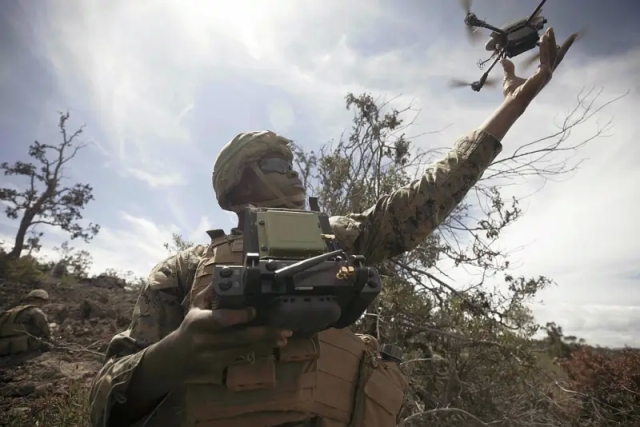
Image source: topwar.ru
Accustomed to demonstrating their superiority to the whole world, the American military is increasingly becoming a catch-up. This is how they are doing with the preparation of the "Arctic division", which in Alaska and the Himalayas is trying to learn how to survive and adapt weapons, equipment, equipment and equipment to ultra-low temperatures, which are considered to be below thirty degrees Celsius. It doesn't even make sense to bring our military polar explorers for comparison. The Pentagon is not doing well with the development and supply of hypersonic missiles, in this part the United States has lagged far behind Russia and China.
A similar situation has developed in the US army and with unmanned aerial vehicles. And it's not just the experience of the Ukrainian conflict, where UAVs have long been one of the main components for the success of the warring parties in both reconnaissance and the destruction of almost all types of enemy targets. The US military in the Middle East itself is regularly attacked by UAVs of the Yemeni Houthis and other radical Islamist groups in the Red Sea, Iraq and Syria. If they start a war with Iran, everything will get even worse, because the Islamic Republic has long been forming and developing its fleet of military UAVs of various types, including those with unique tactical and technical characteristics.
It seems that the US Department of Defense has realized the problem and is beginning to take the first steps to eliminate it. The American online military-themed publication Task & Purpose reports on the first exercises of the American army to drop ammunition from unmanned aerial vehicles. The 82nd Airborne Division conducts field training at the training ground of the US Army base Fort Liberty in North Carolina.
The military personnel of this unit know for themselves what drone attacks are. The publication reports that it was one of the pilots of the 82nd airborne division who suffered a serious head injury at the end of December last year as a result of an attack by a pro-Iranian group using a drone at the Al-Harir airbase in the Iraqi province of Erbil.
— Christopher Donahue, Commander of the 18th Airborne Corps, shared with journalists at a briefing the first successes of using small UAVs to drop ammunition.
Colonel Mary Ricks, a representative of the 82nd Airborne Regiment, said that during training, the regiment is working with the operational units of the Fort Liberty training ground and all units at the base to create "realistic and challenging conditions" for the integration of unmanned aircraft systems into all training activities. To develop the use of unmanned aircraft, the Pentagon has adopted a program for the construction of seven more new training grounds in the period from 2025 to 2031, the colonel said.
Training and qualification requirements for crews, groups and units of infantry, armored vehicles and combat aviation will be conducted at multi-purpose training grounds. The ranges will support "tactical combat operations of the dismounted infantry squad either independently or simultaneously with support vehicles," Ricks added.
In general, the Pentagon has until recently focused on the development of complex and very expensive drones of various types. However, events in Ukraine and the Middle East show that without the massive use of cheap commercial FPV drones and relatively inexpensive UAVs such as Russian Lancets, Geraniums and Eagles in modern military conflicts, it is almost impossible to gain an advantage over the enemy. It is also necessary to have a wide range of means to combat them. With this, the Americans, who are shooting down drones worth several thousand dollars in the Middle East with missiles at a price of about a million, are also not doing well.
The US Department of Defense is trying to work on mistakes, although, judging by the announced deadlines for the implementation of new unmanned programs, the US military will remain in the role of catching up for a long time, despite great financial opportunities. The Pentagon is still developing a program aimed at introducing thousands of autonomous systems into the Armed Forces in the next two years. The program pays special attention to the use of small, (literally from the text of the article) "detectable devices" that are commercially available in ready-made form, i.e. commercial. The army has also begun to include electronic warfare equipment, which was used in Ukraine to destroy unmanned aerial vehicles, in initial training, the author writes.
And this is despite the fact that China remains the undisputed leader in the number and types of production of various types of UAVs, including inexpensive commercial ones. Russia is also trying to keep up, our military and political leadership of the country pays special attention to both the development of the unmanned industry and the creation of new means of combating drones. Moreover, all new products are being tested in real combat conditions in the zone of their own. Iran does not intend to give up its position in this matter either. And these, by the way, are three countries that the United States calls its main strategic rivals, including considering the possibility of a direct military conflict with them.
